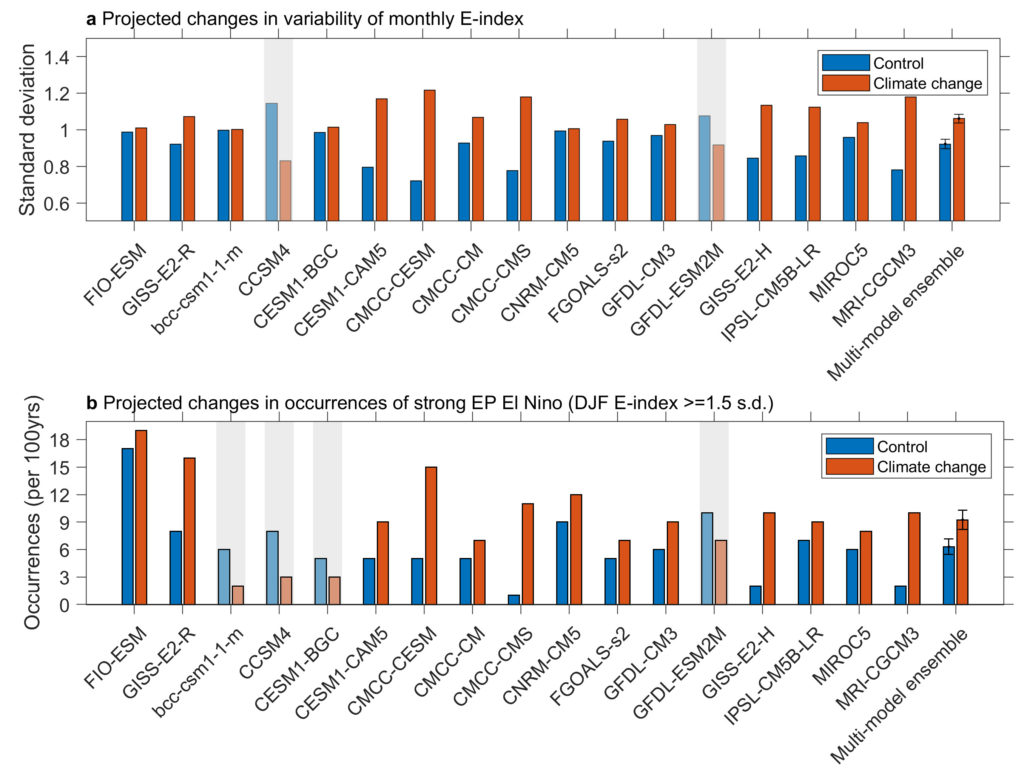Increased variability of eastern Pacific El Niño under greenhouse warming
The El Niño–Southern Oscillation (ENSO) is the dominant and most consequential climate variation on the planet.
Answering the question of how ENSO may change under greenhouse warming has been plagued for decades by a persistent lack of inter-model agreement on the response of the associated sea surface temperature variability.
This paper by Cai et al. shows for the first time strong inter-model consensus over sea surface temperature variability of a type of El Niño, eastern Pacific El Niño that is strong in both strength and impact, despite differences in the details of the simulated El Niño across models.
The result means that we can expect more occurrences of extreme weather associated with eastern Pacific El Niño events (the strongest and most destructive of the two types of El Niño events), which will have pronounced implications for the twenty-first century climate, extreme weather and ecosystems.
Read the full article at the following link. An associated Nature ‘News and Views’ article is at this link.
Find out more about CSHOR ENSO and the IOD research on the project page.

Figure: (a) Comparison of the standard deviation of the E-index over the present-day (1900–1999) and future (2000–2099) 100-year periods in the 17 selected models. 15 of the 17 selected models (88%) simulate a greater variance in the E-index in the future period (red bars) than in the present-day period (blue bars); the two models that simulate a reduction in variance are greyed out. (b) Number of strong EP-El Niño events (E-index > 1.5 s.d.) that occurred in the two 100-year periods. The multi-model mean is also shown in a and b; error bars in the multi-model mean correspond to the 95% confidence interval. The differences between the present-day and future multi-model-mean E-index (s.d.) and between the present-day and future multi-model-mean number of strong events are statistically significant at more than the 95% confidence level. The increase in EP-ENSO SST variance (E-index variance) generally translates to more EP-El Niño events for a given E-index intensity.